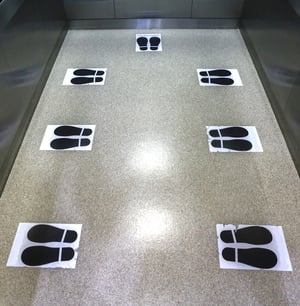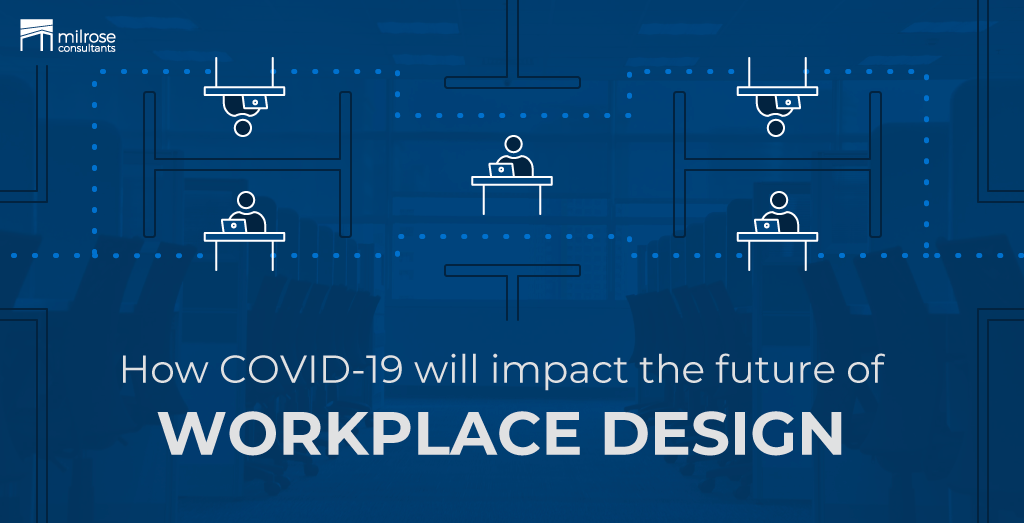The COVID-19 pandemic has forever changed the way we work — especially the physical environments in which we will work. When offices re-open, they may look drastically different, thanks to a slew of concerns and considerations prompted by this public health crisis.
Major changes are coming, from the end of open spaces and coworking (which were once unstoppable trends) to reenvisioning the social-distancing office of the future.
However, like with much of COVID-19's impact, the long-term ramifications are unknown as of yet. Many employers and building owners are pausing on renovation plans until a clearer picture of the post-COVID workplace comes into focus.
To help you start planning and future proofing, here are some of the ways we expect COVID-19 to reshape workplace design and possibly result in future adaptations to the building codes.
Say goodbye to open offices
One of the major implications of COVID-19 is that the crisis has likely brought a screeching halt to the open office trend. The freedom of movement and space was one of the defining qualities of modern workplace design, as more companies adopted open-air plans to encourage collaboration and make the office more social.
Yet the benefits of open offices quickly became dangerous liabilities under COVID-19. Such environments create obvious risks for viruses that are spread through the air or by touching infected surfaces. Everybody working at one long table or rotating through different shared workstations no longer seems like a good idea.
In the future, office planning and design will more tightly control the placement of employees and the flow of people, with a large focus on occupant density especially in Places of Assembly (i.e. cafeterias). Businesses may want to consider redesigning their Places of Assembly for decreased density by spreading out seating to allow for social distancing. As companies prepare to reopen their offices, they may want to consider filing alternate plans for their existing Place of Assembly spaces (cafeterias, theaters, etc.) with the Department of Buildings.

What can companies implement now to help prevent the spread of coronavirus when their employees return to work? Cushman and Wakefield has developed a prototype "6-feet office" to help their clients prepare for their return to the office. Features of their 6-feet office workstation include unique and visually displayed routing patterns for office foot traffic to help remind employees to stay 6 feet away from each other at all times.
Other office design changes that we expect to see include:
- Wider corridors, doorways and common areas
- Increased egress capacity
- Limited capacity elevators
- More partitions between desks
"Hello from the other side" … of the partition
If you've gone shopping during the pandemic, you've likely noticed partitions being put in at checkout registers for groceries and other essential businesses. These installations are used to block air droplets from sneezes or coughs, and generally limit air flow between two persons.
Odds are, you'll also see partitions become a commonplace fixture in professional offices in the future.
Such barriers can be effective in protecting employees from the spread of communicable diseases. Employers should definitely consider putting partitions between adjacent desks, standing workstations and other locations where they can provide utility, like water fountains or bathrooms.
This likely embrace of partitions will create an opportunity for innovative office design and use of materials. Importantly, partitions will need to be made with different antibacterial fabrics and finishes, or with metals that possess such properties. Employers will need to do their research on considerations like aluminum versus wood and what treatments will be needed.
Can't touch this
The scale of touch in the office is enormous — employees touch everything from elevator buttons to door handles, pencils, copiers, bathroom faucets, screens and all manner of other surfaces, items and technologies.
Limiting the spread of germs and dangerous viruses via skin contact will become a priority in the post-COVID world. That means offices will operate much differently than they did before, relying heavily on automation and voice- or sensor-activated technology, the type powering toilets that flush when you leave the stall.
Use of such solutions is likely to expand, as employers and designers look to integrate voice and sensor controls throughout the office building. That could mean the elimination of elevator buttons in favor of a voice-activated assistant that brings you to the office floor. In the office of the future, you probably won't grab a door knob to enter, either. Radio frequency identification (RFID) technology and personal key cardscan help facilitate touchless entry and exit. Operation of everything from the lights to the coffee machine can be automated — and very likely will be.
Public bathrooms in particular will need to be rethought amid calls for better building codes and design. Infection control will be a top priority in any future discussion of code reform, with emphasis on sensor-activated faucets, toilets, doors and hand dryers as well as self-cleaning toilets and hand sanitizer dispensers at the egress points.
For fixtures and features that cannot be replaced with such solutions, antibacterial coatings and more regular cleanings will need to be considered.
Clearing the air
Diseases like COVID-19 are so hard to stop largely because of how they spread, by respiratory droplets that hang in the air. The need for healthy indoor air has never been so pronounced, which will lead offices and building owners to carefully assess HVAC systems and performance to mitigate these risks.
Already, the American Society of Heating, Refrigerating and Air-Conditioning Engineers (ASHRAE) has published guidance on building operations for active workplaces during the pandemic, including HVAC best practices like:
- Disabling demand-controlled ventilation (DCV).
- Further opening minimum outdoor air dampers, as high as 100%, to eliminate recirculation.
- Upgrading central air filtration to the MERV-1311 or the highest compatible with the filter rack.
- Running systems on longer hours, if possible 24/7.
- Using portable room air cleaners with HEPA filters.
A big innovation in HVAC is ultraviolet germicidal irradiation (UVGI). According to the U.S. Centers for Disease Control and Prevention, UVGI is an emerging technology that has shown promise in killing viruses, including COVID-19, in health care facilities. Adding such fixtures to HVAC systems may enable them to disinfect air better.
Centers for Disease Control and Prevention, UVGI is an emerging technology that has shown promise in killing viruses, including COVID-19, in health care facilities. Adding such fixtures to HVAC systems may enable them to disinfect air better.
Those in NYC will have to consider enhancements and upgrades regardless, in order to comply with Local Law 97 (effective 2024).
Building a better future
It will be one thing for offices to reopen after the crisis, and another for people to feel safe going back to work. In order to better protect employee safety and prevent another pandemic from happening, building owners will need to invest in improving their buildings. This may entail obtaining LEED, WELL and Fitwel certifications to better equip your buildings to prevent disease spread and ensure the health and safety of building occupants.
Planning on renovating and improving your office space to protect the health of your employees and comply with future post-COVID building code requirements? Reach out to Milrose today to receive expert advice and guidance from our code and zoning analysts.







